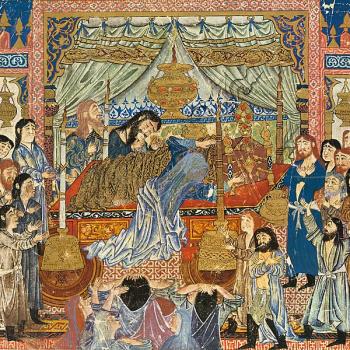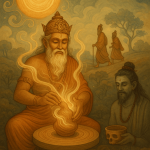
Patrick Mason was the first FairMormon speaker on Friday afternoon. His remarks, entitled “The Courage of Our Convictions: Embracing Mormonism in a Secular Age,” seemed to draw from his recent book Planted, and were well received. He argued for kindness and openness in our relations with those who harbor questions, entertain doubts, differ with the Church on social/moral issues, and/or become disaffected. I liked the talk.
Ralph Hancock didn’t follow Patrick Mason (and Grant Hardy, the speaker who preceded Professor Mason) by design, but he sounded a cautionary note that I thought wholly appropriate. Kindness, tolerance, and openness are highly desirable qualities, of course, but they can be absolutized into qualities that might, perhaps, be somewhat less desirable. Any movement can become more embracing by becoming less distinctive, by discarding what makes it unique. But then, if this is carried too far, does it retain any reason for its existence?
A cell whose wall or outer membrane became completely impermeable would die. A cell whose wall or outer membrane utterly dissolved and disappeared would no longer be a cell at all. An Ayn Rand “Objectivist” club could certainly increase its membership by recruiting socialists, but it would effectively cease to exist in the very act of doing so. A museum devoted to French Impressionism could expand by including Chinese landscapes (or vintage automobiles, or early Coke bottles, or squirrel skeletons), but doing so would, to put it mildly, be to change that museum’s nature.
There will always be a tension, in the Gospel and the Church as (mutatis mutandis) elsewhere, between love and tolerance, on the one hand, and maintaining standards and doctrines, on the other. In my view, neither should ever be permitted to altogether overcome the other.
Could we widen our potential audience by surrendering the concept of chastity, for example? No doubt. But that would be a very portentous step. If we abandoned the Book of Mormon and Joseph Smith, our faith would be far less jarring to others. But it wouldn’t be Mormonism any more. (To some degree, at least, it seems to me that the Community of Christ, the former Reorganized Church of Jesus Christ of Latter Day Saints, represents a useful case study along these lines.) Although I strongly believe in finding common ground with others, we should never abandon or compromise our distinctives, either. To overemphasize what we share with others may also have the effect of leading others to see no reason to leave what they already have for what we offer.
Anyway, I liked Professor Hancock’s talk, and I commend it to your reading when it appears.
Brian Stubbs was the next speaker, presenting his extraordinary thesis that there are strong and demonstrable elements of Semitic vocabulary in the Native American Uto-Aztecan language family. If he’s right — and, thus far, according to his account, the experts have either remained silent (probably, I suspect, assuming that it simply isn’t possible and, thus, isn’t worth their attention) or have pronounced themselves quite impressed — the implications of what he’s claiming are dramatic.
About the closing speaker at FairMormon’s 2016 conference, the less said, the better.
I always enjoy these gatherings. Among many other good things, they offer a chance to meet longtime friends. On Wednesday night, some of us gathered with a few of the FairMormon volunteers for snacks and conversation. On Thursday evening, we enjoyed the “speakers dinner.” On Friday evening, my wife and I bowed out of the dinner with other members of the FairMormon board and officers and friends and, instead (and by prior plan), had dinner with Stan Carmack and with Royal Skousen and members of his family.












